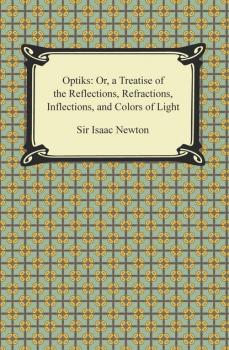ТОП просматриваемых книг сайта:
Sir Isaac Newton
Список книг автора Sir Isaac NewtonАннотация
Aside from the Principia and occasional appearances of the Opticks, Newton's writings have remained largely inaccessible to students of philosophy, science, and literature as well as to other readers. This book provides a remedy with wide representation of the interests, problems, and diverse philosophic issues that preoccupied the greatest scientific mind of the seventeenth century.Grouped in sections corresponding to methods, principles, and theological considerations, these selections feature cross-references to related essays. Starting with an examination of the methods of natural philosophy — including the rules of reasoning, the formulation of hypotheses, and the experimental method — the essays explore the laws of motion and the relationships between God and gravity, creation, and universal design. Discussions of questions related to natural philosophy include theories on light, colors, and perceptions. The volume concludes with absorbing selections from the Opticks and a helpful series of historical and explanatory notes.
Opticks: Or, a Treatise of the Reflections, Refractions, Inflections, and Colors of Light - Sir Isaac Newton
Аннотация
Sir Isaac Newton (1642-1727) is without a doubt one of the most well-known and influential scientists in history; he made incalculable contributions to the fields of physics, mathematics, astronomy, philosophy and theology. From 1670 to 1672, Newton lectured on optics while developing his theory of color. This led to his invention of the refracting telescope in 1672, which would correct chromatic aberration in the traditional refracting telescope, and so impressed the Royal Society that they encouraged him to publish his work. «Opticks» was Newton's second major contribution in this field, and offered new insights into the nature of color, light, and the phenomena of diffraction. The book also includes Newton's Queries, which address a wide range of physical phenomena, include the nature and transmission of heat, the possible cause of gravity, electrical phenomena, chemical action, and ethics of both science and human conduct.
Аннотация
In his monumental 1687 work, <I>Philosophiae Naturalis Principia Mathematica</I>, known familiarly as the <I>Principia</I>, Isaac Newton laid out in mathematical terms the principles of time, force, and motion that have guided the development of modern physical science. Even after more than three centuries and the revolutions of Einsteinian relativity and quantum mechanics, Newtonian physics continues to account for many of the phenomena of the observed world, and Newtonian celestial dynamics is used to determine the orbits of our space vehicles.<BR /><BR /> This authoritative, modern translation by I. Bernard Cohen and Anne Whitman, the first in more than 285 years, is based on the 1726 edition, the final revised version approved by Newton; it includes extracts from the earlier editions, corrects errors found in earlier versions, and replaces archaic English with contemporary prose and up-to-date mathematical forms.<BR /><BR /> Newton's principles describe acceleration, deceleration, and inertial movement; fluid dynamics; and the motions of the earth, moon, planets, and comets. A great work in itself, the <I>Principia</I> also revolutionized the methods of scientific investigation. It set forth the fundamental three laws of motion and the law of universal gravity, the physical principles that account for the Copernican system of the world as emended by Kepler, thus effectively ending controversy concerning the Copernican planetary system.<BR />  <BR /> The translation-only edition of this preeminent work is truly accessible for today's scientists, scholars, and students.



